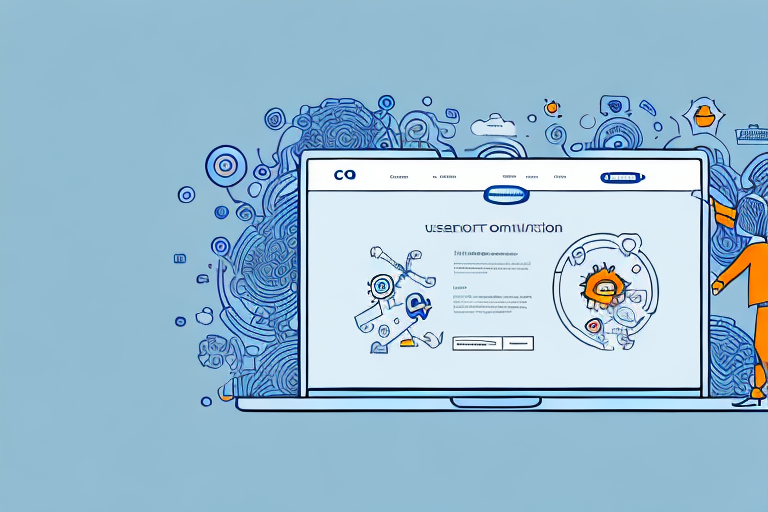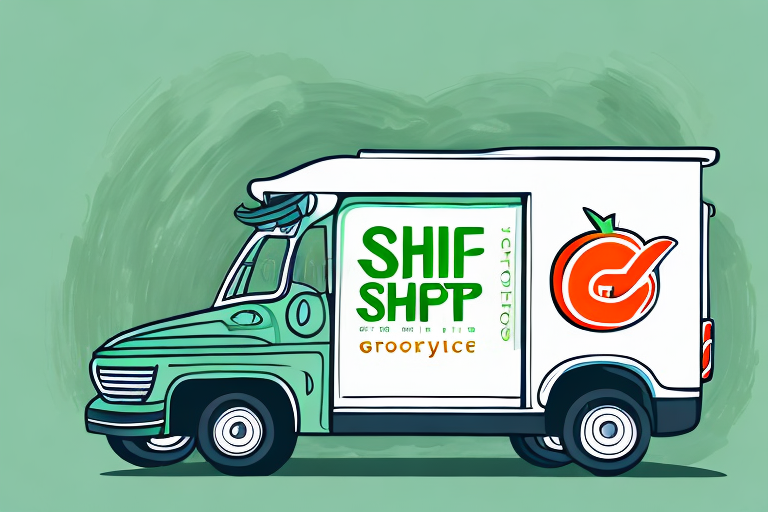Creating and Managing Personalized Product Recommendations: A Step-by-Step Guide
As businesses grow and competition increases, it's essential to find ways to stand out and provide customers with value beyond just selling products. One effective strategy is personalizing product recommendations, tailoring suggestions to each shopper's unique preferences and interests. In this comprehensive guide, we'll explore the importance of personalized product recommendations, how to create them, and how to manage them effectively.
Why Personalized Product Recommendations Are Crucial for Your Business
Personalized product recommendations offer significant benefits for both customers and businesses. For customers, they enhance the shopping experience by making it more enjoyable and efficient, allowing them to quickly find items that match their interests and preferences. For businesses, personalized recommendations can:
- Increase conversion rates
- Boost customer loyalty
- Maximize revenue
By providing relevant recommendations, customers are more likely to make repeat purchases and become long-term patrons.
Moreover, personalized recommendations help businesses gain deeper insights into customer needs and preferences. Analyzing data from browsing and purchasing history enables businesses to identify popular products, emerging trends, and areas needing improvement. This information can optimize product offerings, marketing strategies, and overall business operations.
According to a Forbes report, personalized recommendations can drive a 20% increase in sales on average.
Understanding Your Target Audience and Their Preferences
The foundation of a successful personalized recommendation strategy lies in a deep understanding of your target audience and their preferences. To achieve this:
- Collect data on your customers
- Segment them based on demographic, behavioral, and psychographic factors, such as age, location, past purchases, and online browsing activity
Understanding who your customers are and what they want allows you to tailor recommendations to their unique needs.
Effective data collection methods include:
- Surveys and Feedback Forms: Provide insights into customer preferences, pain points, and satisfaction levels.
- Social Media Analytics: Understand how customers engage with your brand and what content resonates with them.
It's crucial to regularly analyze and update customer segments, as preferences and behaviors can change over time. Staying up-to-date ensures that your personalized recommendations remain relevant and effective.
Collecting and Analyzing Customer Data for Personalized Recommendations
Effective personalized recommendations hinge on robust customer data collection and analysis. Utilize tools such as predictive analytics and data mining to:
- Analyze customer behavior
- Predict preferences
This data-driven approach enables the creation of targeted recommendations that drive engagement and increase revenue.
Key considerations when collecting customer data include:
- Transparency and Ethics: Inform customers about data collection practices and usage.
- Data Protection: Implement clear policies to secure customer data.
By identifying trends and patterns in customer behavior, businesses can enhance product offerings, refine marketing strategies, and improve the overall customer experience. According to a McKinsey study, personalization can reduce acquisition costs by as much as 50%, lift revenues by 5 to 15%, and increase the efficiency of marketing spend by 10 to 30%.
Choosing the Right Recommendation Engine for Your Business
Selecting the appropriate recommendation engine is critical for effective personalization. The most popular types include:
- Collaborative Filtering: Recommends items based on a customer's past purchases and the behavior of similar users.
- Content-Based Filtering: Suggests items based on the attributes of the products, such as color, size, and brand.
- Hybrid Recommendation Engines: Combine collaborative and content-based filtering for more accurate and personalized recommendations.
When choosing a recommendation engine, consider factors such as:
- The size of your customer base
- The complexity of your product offerings
- The amount of available data
For example, collaborative filtering may be more effective for businesses with a large customer base and diverse products, while content-based filtering suits those with niche products and smaller audiences. Hybrid engines, though resource-intensive, offer the most precise personalization.
For further reading on recommendation engines, refer to this academic paper on recommendation systems.
Integrating Personalized Product Recommendations into Your Website or App
Once you've selected a recommendation engine, integrating it into your website or app is the next step. Follow these guidelines:
- Collaborate with your IT team or a third-party provider to ensure seamless integration.
- Redesign key elements like the homepage or product pages to accommodate recommendation widgets.
- Test personalized recommendations to verify their accuracy and effectiveness.
Ensure you have a robust data collection system to gather information on user behavior and preferences. This data fuels the recommendation engine to generate accurate suggestions. Additionally, offer users the option to provide feedback on recommendations, which can further refine and improve the system.
According to Shopify, effective integration of recommendation engines can lead to a 25% increase in average order value.
Best Practices for Designing Effective Recommendation Widgets
Recommendation widgets are key interfaces for displaying personalized suggestions on your website or app. To design effective widgets:
- Keep It Simple: Ensure the widget is user-friendly and easy to navigate.
- Visual Appeal: Design widgets that are aesthetically pleasing and align with your brand.
- Prominent Placement: Position widgets where they are easily noticeable, such as the homepage or product pages.
Additionally, the relevance of recommendations is paramount. Utilize algorithms that consider browsing history, purchase history, and other relevant data to tailor suggestions to individual user interests and needs. Regularly update and refresh recommendations to maintain user engagement.
For more insights on widget design, visit this Smashing Magazine article on eCommerce widgets.
Refining and Optimizing Your Personalized Product Recommendations
Personalized product recommendations require continuous refinement and optimization to remain effective. Implement the following strategies:
- Regularly review and tweak recommendation algorithms to enhance accuracy.
- Analyze customer feedback to adjust recommendations accordingly.
- Conduct A/B testing to determine the most effective recommendation approaches.
Consider the context in which recommendations are presented, such as browsing history, location, and time of day, to provide more relevant and timely suggestions. Incorporate social proof, like customer reviews and ratings, to bolster the effectiveness of your recommendations.
Research from Harvard Business Review highlights that continuous optimization can lead to a 30% improvement in recommendation relevance.
Measuring the Effectiveness of Your Recommendation Engine with Analytics Tools
Evaluating the performance of your recommendation engine is essential for identifying strengths and areas for improvement. Utilize analytics tools such as Google Analytics or Adobe Analytics to track key metrics, including:
- Conversion rates
- Click-through rates
- Revenue generated by recommendations
Additionally, assess the user experience by analyzing feedback and behavior to determine if recommendations are relevant and beneficial. Conduct A/B testing to compare different recommendation algorithms and optimize performance accordingly.
Continuous monitoring and enhancement of your recommendation engine ensure a personalized and engaging experience for users, fostering increased customer satisfaction and loyalty. For more on analytics tools, check out this Gartner glossary on web analytics.
Common Mistakes to Avoid When Creating and Managing Personalized Product Recommendations
Avoiding common pitfalls is crucial for the success of your personalized recommendation strategy. Common mistakes include:
- Relying too heavily on past purchase data
- Failing to effectively segment your audience
- Providing irrelevant or poorly targeted recommendations
To prevent these mistakes:
- Continuously test and refine your recommendation engine
- Regularly analyze your data to identify areas for improvement
- Consider the context of recommendations, such as location, season, and previous purchases
For instance, recommending winter coats to someone in a warm climate can lead to frustration and a negative user experience. Ensure recommendations are relevant by factoring in such contextual elements.
Learn more about common pitfalls from this Shopify article on eCommerce mistakes.
Case Studies: Successful Businesses Implementing Personalized Product Recommendations
Several businesses have successfully integrated personalized product recommendations into their strategies, yielding impressive results:
- Amazon: Utilizes collaborative filtering to provide personalized recommendations, significantly increasing revenue.
- Netflix: Employs a hybrid recommendation engine to tailor suggestions based on users' viewing history and preferences.
- Spotify: Combines collaborative filtering and natural language processing to suggest songs and playlists, enhancing user engagement and retention.
These examples demonstrate the effectiveness of personalized recommendations in driving engagement and sales.
For more detailed case studies, refer to this collection of case studies on personalized recommendations.
Future Trends in Personalized Recommendation Technology
The future of personalized recommendation technology is promising, driven by advancements in artificial intelligence and machine learning. Key trends include:
- Natural Language Processing (NLP): Enhances the understanding of customer preferences by analyzing reviews, social media posts, and other feedback.
- Predictive Analytics: Anticipates customer needs and preferences by analyzing data such as purchase history, browsing behavior, and demographics.
- Integration with Emerging Technologies: Incorporates personalized recommendations into virtual reality (VR) and augmented reality (AR) platforms.
These advancements will enable more accurate and effective recommendation engines, further personalizing the customer experience. Staying abreast of these trends can provide a competitive edge and drive future success.
Explore more about future trends in this TechRadar article on recommendation system trends.
Conclusion: Continuously Improving Your Personalized Product Recommendation Strategy
Creating and managing personalized product recommendations is an ongoing process that requires continuous refinement and optimization. By understanding your audience, analyzing customer data, and selecting the right recommendation engine, you can develop personalized recommendations that drive engagement and increase revenue.
Key takeaways for continuous improvement include:
- Regularly test and experiment with different recommendation strategies
- Utilize A/B testing to identify the most effective recommendations
- Stay updated with industry trends and technological advancements
By consistently enhancing your personalized product recommendation strategy, you can build stronger customer relationships and achieve long-term business success.
For ongoing strategies and tips, visit this Entrepreneur article on personalization strategies.




















